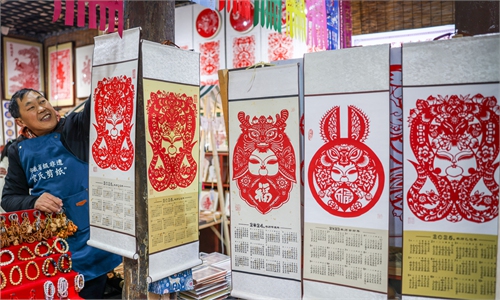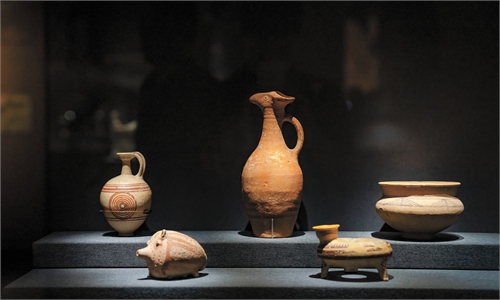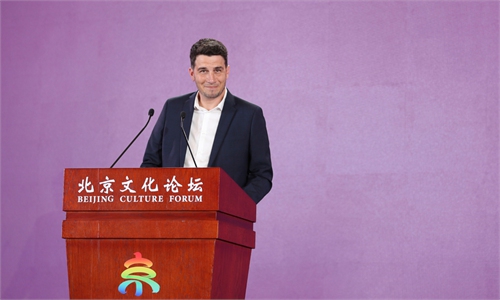ARTS / CULTURE & LEISURE
Culture, heritage, exhibitions bring people together: UN ambassador
Strengthening ties through heritage
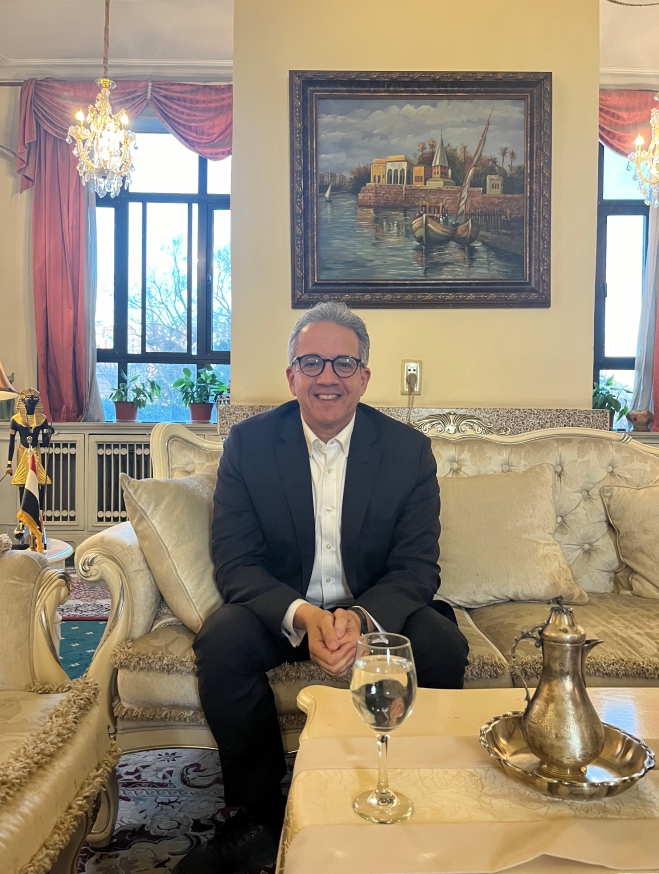
Khaled El-Enany, the United Nations Tourism Ambassador for Cultural Tourism Photo: Li Hang/GT
"Congratulations to China! I believe China has many other significant practices that will soon be inscribed," Khaled El-Enany, the United Nations Tourism Ambassador for Cultural Tourism and former Egyptian minister of tourism and antiquities, expressed his delight in learning about the news that the Spring Festival was inscribed on the UNESCO Intangible Cultural Heritage List in December 2024.During an exclusive interview with the Global Times, El-Enany stressed that the current relationship between Egypt and China remains exceptionally strong, especially in cultural heritage exchanges.
"With a wealth of monuments and cultural treasures, we have abundant opportunities to learn from each other, exchange best practices, and collaborate on knowledge-sharing and capacity-building programs," he said. "I believe Egypt can learn from China, particularly in the areas of advanced technology and in the preservation and promotion of cultural heritage."
From the involvement of Chinese archaeologists in excavating the Montu Temple in Luxor and the joint World Heritage nomination between China and Egypt to the exhibition of ancient Egyptian artifacts in Shanghai, which attracted over 1 million visitors, the two countries have forged meaningful cultural collaborations.
"China and Egypt share common values and are home to great civilizations. Culture, heritage, and exhibitions not only bring people together but also strengthen the partnership between our nations," remarked El-Enany.
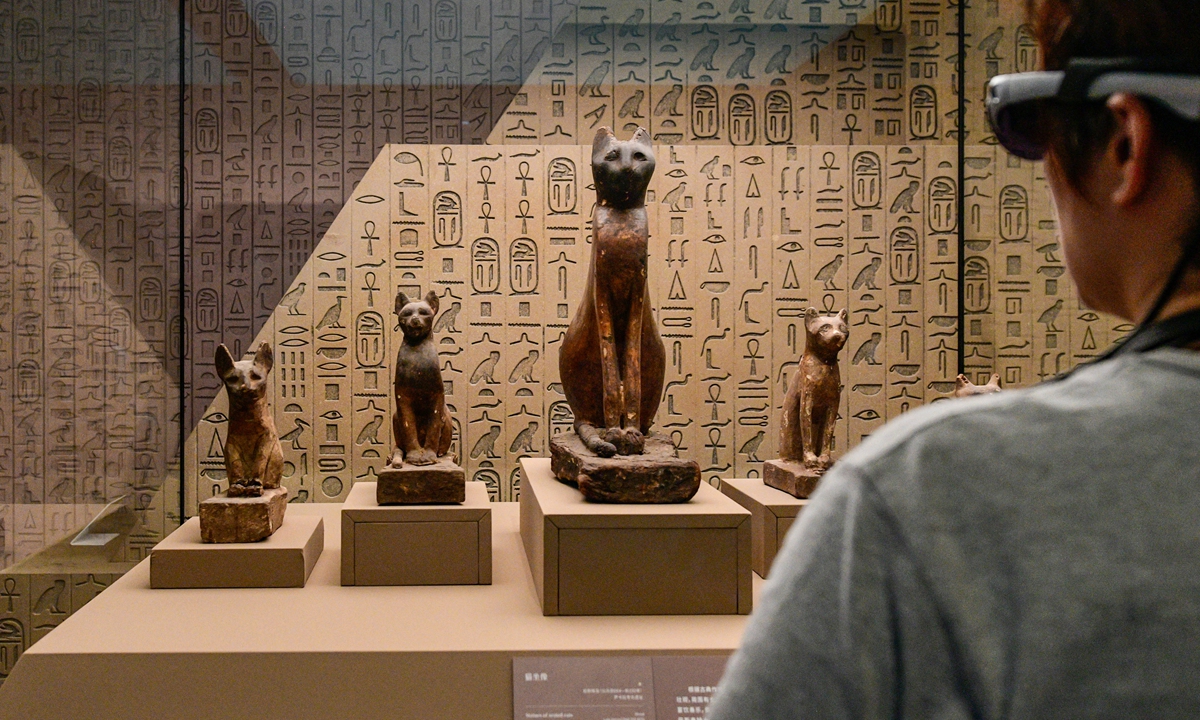
A visitor explores an exhibition of ancient Egyptian artifacts in Shanghai. Photo: Chen Xia/GT
Cultural cooperationChina and Egypt are pillars of the world civilizations, and their shared legacy offers immense opportunities for cooperation, said El-Enany.
One of the most visible and significant manifestations of Egypt-China cultural cooperation is their joint archaeological projects. The Montu Temple, located at the Karnak Temple Complex of Egypt's monument-rich city of Luxor, was dedicated to the worship of Montu, a falcon-headed war god.
Since late 2018, the first Egyptian-Chinese archaeological mission has been working seasonally at the Karnak Temple Complex. After six years of joint efforts by Chinese and Egyptian archaeologists, the excavation of the once-abandoned Montu Temple has achieved fruitful results.
According to El-Enany, these projects go beyond mere excavation endeavors - they symbolize a growing cultural diplomacy between the two nations.
"The joint archaeological projects between China and Egypt are shining examples of how ancient civilizations can collaborate in uncovering and preserving humanity's shared heritage," El-Enany said.
Moreover, the issue of artifact repatriation has become a point of mutual concern for both Egypt and China. The two countries have faced challenges regarding the illegal trafficking and appropriation of cultural treasures by Western nations.
El-Enany admits the issue of artifact repatriation is complex, but he sees artifact repatriation as an opportunity for collaboration rather than division. "These artifacts are not just physical objects; they are symbols of our cultural heritage and shared humanity," he said.
"I believe that the repatriation of such artifacts should be approached in a spirit of mutual respect, understanding, and cooperation among all nations," he noted. "This is not just about returning objects; it's about building trust and reinforcing the idea that our shared humanity is far more important than any single nation's interest."
In his view, Egypt and China, along with other countries, should work together to create dialogue and share best practices for preserving and protecting cultural heritage. UNESCO can also play a pivotal role in this process.
"UNESCO has been a leader in promoting international cooperation and cultural preservation, including through the 1970 Convention and the Intergovernmental Committee for Promoting the Return of Cultural Property," remarked El-Enany.
Mutual learning
During the interview, El-Enany also expressed his admiration for China's commitment to safe-guarding its rich heritage, noting that China and Egypt have opportunities for mutual learning in the preservation of traditional culture.
China and Egypt are working together for a joint nomination of the Baiheliang Inscriptions in China's Chongqing and the Nilometer in Egypt as the UNESCO World Cultural Heritage status. These hydrological heritage sites highlight humanity's ingenuity in managing natural resources and their relevance to contemporary challenges like water conservation and climate change, he said.
"This joint nomination reminds us that universal heritage unites us and fosters mutual understanding between people around a common goal, even when separated by thousands of kilometers."
According to El-Enany, China and Egypt play pivotal roles within UNESCO. Together, they embody the spirit of UNESCO's mission to protect, celebrate, and share cultural heritage.
Egypt's expertise in preserving ancient stone monuments and archaeological sites can complement China's advancements in digital preservation and heritage management. "By combining these strengths, we can set new benchmarks in cultural preservation," he said.
China has also leveraged digital media to preserve and promote its traditions. An exemplary instance of this approach is the game Black Myth: Wukong, which won the Best Action Game and Players' Voice awards at The Game Awards 2024, known as the Oscars of the gaming world.
The game has captured global attention by integrating traditional Chinese folklore into an interactive format, thus introducing new audiences to the country's ancient mythology.
"I believe we can learn from China's use of technology, such as AI, to preserve and promote cultural heritage. It is essential to make heritage both accessible and well-preserved, while enhancing archaeological excavations and improving the visitor experience. These are areas where Egypt can draw valuable lessons from China's approach," El-Enany concluded.
